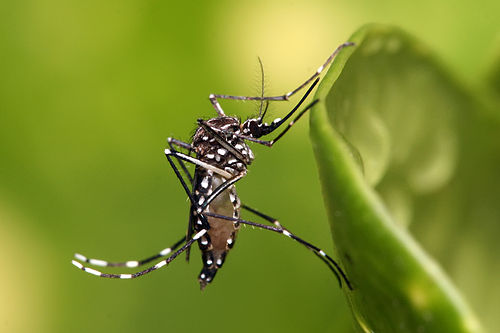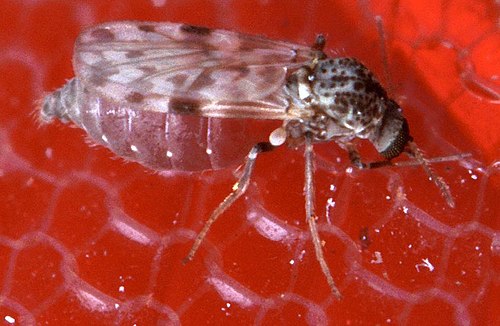Mosquitonoun
A small flying insect of the family Culicidae, the females of which bite humans and animals and suck blood, leaving an itching bump on the skin, and sometimes carrying diseases like malaria and yellow fever.
Mosquitoverb
To fly close to the ground, seemingly without a course.
Mosquitonoun
Any one of various species of gnats of the genus Culex and allied genera. The females have a proboscis containing, within the sheathlike labium, six fine, sharp, needlelike organs with which they puncture the skin of man and animals to suck the blood. These bites, when numerous, cause, in many persons, considerable irritation and swelling, with some pain. The larvæ and pupæ, called wigglers, are aquatic.
Mosquitonoun
two-winged insect whose female has a long proboscis to pierce the skin and suck the blood of humans and animals
Mosquito
Mosquitoes are members of a group of about 3,500 species of small flies within the family Culicidae (from the Latin culex meaning ). The word (formed by mosca and diminutive -ito) is Spanish for .
Midgenoun
any of various small two-winged flies, for example, from the family Chironomidae or non-biting midges, the family Chaoboridae or phantom midges, and the family Ceratopogonidae or biting midges, all belonging to the order Diptera
Midgenoun
(fishing) any bait or lure designed to resemble a midge
Midgenoun
Any one of many small, delicate, long-legged flies of the Chironomus, and allied genera, which do not bite. Their larvæ are usually aquatic.
Midgenoun
A very small fly, abundant in many parts of the United States and Canada, noted for the irritating quality of its bite.
Midgenoun
minute two-winged mosquito-like fly lacking biting mouthparts; appear in dancing swarms especially near water
Midge
A midge is any small fly, including species in several families of non-mosquito Nematoceran Diptera. Midges are found (seasonally or otherwise) on practically every land area outside permanently arid deserts and the frigid zones.



















